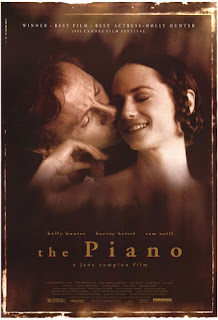November 15th: INFERNO (Dario Argento, 1980)
NOTE: This film will be projected in the high-definition Blu-ray format.
A woman uncovers dark secrets in her New York apartment building and contacts her brother in Rome for help.
Dario Argento was one of the key figures in the Italian genre of giallo, encompassing various thriller, crime, and horror films. His international breakthrough came with his 1975 work Deep Red, and he followed it up with his first foray into supernatural horror with 1977's Suspiria, another hit at home and in the United States.
Due to the popularity of Suspiria, Argento and his co-writer (and partner) Daria Nicolodi decided to retroactively make it the first of a trilogy, expanding on mythology lightly touched upon in the story. Inspired by the works of British writer Thomas de Quincey (Confessions of an Opium Eater), and other occult material, they continued the concept of the three "Mothers of Sorrow", and with Suspiria already revealing the Mother of Sighs, the second film would be based around the Mother of Darkness.
Argento wrote the script from his and Nicolodi's notes while staying in New York City, and decided to move the action there, having set the previous story in southwestern Germany. With 20th Century Fox providing a large portion of the budget, Argento was able to be more ambitious with this film, and some location shooting was done there, most notably in Central Park. The remainder was shot in Rome. The cast includes Nicolodi, American actors Irene Miracle and Leigh McCloskey (TV's Dallas), and playing a different role than she did in Suspiria, Italian actress Alida Valli.
During the shoot, Argento became seriously ill, and after attempting to continue working for a while, he had to call on the services of his contemporary Mario Bava to direct some of the second unit work. Bava was already working on the film in the effects and art department, making the death scenes particularly memorable. Not only does the film share thematic elements with Suspiria, but also continues Argento's bold use of color, particularly reds and blues.
In a change from his previous two films, where the musical score was provided by Italian prog rock band Goblin, Argento opted to work with a more famous name from the same genre: Keith Emerson from British group Emerson, Lake, and Palmer, and the result is a more elegant score that veers away from the harder rock heard before.
Inferno was met with mixed reviews, and failed to replicate the success of its predecessor (it was not as widely distributed by Fox), but its reputation has grown in the decades since, and it placed on Time Out magazine's 2013 list of The 100 Greatest Horror Films. The third installment of the trilogy, Mother of Tears, was not made until 2007.
Running time is approx. 100 minutes.
Due to the popularity of Suspiria, Argento and his co-writer (and partner) Daria Nicolodi decided to retroactively make it the first of a trilogy, expanding on mythology lightly touched upon in the story. Inspired by the works of British writer Thomas de Quincey (Confessions of an Opium Eater), and other occult material, they continued the concept of the three "Mothers of Sorrow", and with Suspiria already revealing the Mother of Sighs, the second film would be based around the Mother of Darkness.
Argento wrote the script from his and Nicolodi's notes while staying in New York City, and decided to move the action there, having set the previous story in southwestern Germany. With 20th Century Fox providing a large portion of the budget, Argento was able to be more ambitious with this film, and some location shooting was done there, most notably in Central Park. The remainder was shot in Rome. The cast includes Nicolodi, American actors Irene Miracle and Leigh McCloskey (TV's Dallas), and playing a different role than she did in Suspiria, Italian actress Alida Valli.
During the shoot, Argento became seriously ill, and after attempting to continue working for a while, he had to call on the services of his contemporary Mario Bava to direct some of the second unit work. Bava was already working on the film in the effects and art department, making the death scenes particularly memorable. Not only does the film share thematic elements with Suspiria, but also continues Argento's bold use of color, particularly reds and blues.
In a change from his previous two films, where the musical score was provided by Italian prog rock band Goblin, Argento opted to work with a more famous name from the same genre: Keith Emerson from British group Emerson, Lake, and Palmer, and the result is a more elegant score that veers away from the harder rock heard before.
Inferno was met with mixed reviews, and failed to replicate the success of its predecessor (it was not as widely distributed by Fox), but its reputation has grown in the decades since, and it placed on Time Out magazine's 2013 list of The 100 Greatest Horror Films. The third installment of the trilogy, Mother of Tears, was not made until 2007.
Running time is approx. 100 minutes.










Comments
Post a Comment